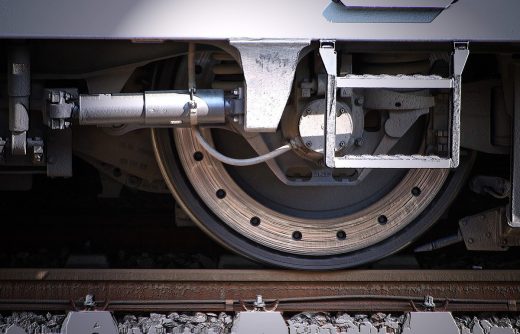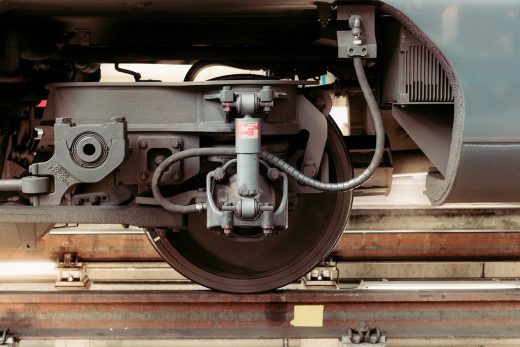10 safety tips for banksman when working with abrasive wheels, Industrial work operation advice
10 Safety Tips for Banksman When Working with Abrasive Wheels
3 August 2023
The safety of the workers is very important in industrial settings. Especially those who work with abrasive wheels need to be extra cautious.
Construction, manufacturing, and metalworking industries commonly involve the use of abrasive wheels. However, its usage has numerous risks, making it crucial to take precautionary measures.
The role of a banksman in such operations is vital, as they are responsible for directing and guiding the movement of vehicles or machinery. This blog will outline the ten safety tips every banksman should follow when working with abrasive wheels.
Before we begin with the safety tips, let’s understand what a banksman is, the roles, and the dangers of abrasive wheels.
What is A Banksman?
A Banksman is a proficient individual with specialised banksman training responsible for ensuring safe work operations involving vehicles and mobile machinery. They play a crucial role in implementing safety protocols, especially when other safety measures are insufficient to lessen the risks of the movement of vehicles and mobile machinery.
The duty holders (employers, self-employed individuals, and property managers) must prioritise alternative control measures before using a Banksman on construction sites or similar environments. This could include measures like redesigning traffic routes to minimise risks. Only when the risks persist a risk assessment might suggest the need for a Banksman to further lower the risks to an acceptable level.
One of the primary responsibilities of a Banksman is guiding vehicles and mobile machinery when the driver or operator requires assistance to execute safe movements or manoeuvres.
Role of A Banksman in Abrasive Wheel Usage
An abrasive wheel is a cutting or grinding tool that contains abrasive particles, and it is commonly used in various industries for cutting, grinding, and polishing materials. The Banksman’s role in this scenario is to ensure that the operation involving abrasive wheels is conducted safely and efficiently.
When working with abrasive wheels, the Banksman’s responsibilities may include:
- Providing guidance and instructions to the operator using the abrasive wheel.
- Directing the movement of materials or objects being processed with the abrasive wheel.
- Ensuring that everybody follows safety measures, including the use of personal protective equipment (PPE) by the operator and other personnel in the vicinity.
- Monitoring the area to prevent unauthorised personnel from entering the hazardous zone during the operation.
- Coordinating with the operator to avoid potential hazards and accidents.
The Banksman’s presence is crucial in such tasks because working with abrasive wheels can be hazardous due to the potential for flying debris, sparks, and the risk of the abrasive wheel disintegrating if not used properly. With a Banksman overseeing the operation, the risks can be minimised, and the task can be completed safely and effectively.
Dangers of Abrasive Wheels
Abrasive wheels possess the potential to cause severe harm and even fatality. Whether used at home or in a professional setting, individuals handling abrasive wheels are exposed to a variety of risks and hazards.
The dangers include:
- Eye injuries resulting from airborne metallic and abrasive particles.
- Inhalation of dust and fumes during dry grinding can lead to lung damage over time.
- Injuries caused by workpieces being ejected or fragments flying off.
- Long-term exposure to vibration can lead to hand-arm vibration syndrome, causing pain or loss of digits due to restricted blood flow.
- Prolonged exposure to noise, leading to hearing loss.
- Injuries caused by loose clothing such as sleeves or ties.
- Due to the inherent dangers involved, regular inspection of abrasive wheels is essential.
The Banksman’s awareness of the hazards associated with working with abrasive wheels is important. It helps prevent injuries, ensure safe operations, respond to emergencies quickly, communicate effectively, maintain a safe work culture, and assess risks continually.
Causes of Injuries
Abrasive wheels lead to injuries for various reasons, and we will now explore the most frequently encountered issues.
· Contact with Rotating Wheels
Abrasive wheels spin at high speeds, making them capable of inflicting severe injuries if they come into contact with flesh. Handheld tools like angle grinders are particularly prone to this risk due to their exceptionally fast wheel rotations.
· Wheel Fragmentation
Should an abrasive wheel break while in use, it can cause horrific injuries and even fatalities. The wheel’s high-speed rotation means that any fragments ejected from the breakage can reach speeds of up to 100 miles per hour.
· Ejection of Particles or Workpieces
As abrasive wheels wear down, they shed particles, often observed as sparks. These sparks can cause damage to the skin and pose a significant threat if they enter the eyes, potentially leading to blindness. Additionally, workpieces can also be forcefully ejected at high speeds.
· Drawing In
Any object that comes into contact with the abrasive wheel can get entangled and drawn into it. If the operator’s clothing, such as a sleeve or a tie, gets caught in the wheel, it can result in injuries as the wheel pulls the operator toward the machine.
Safety Tips for Banksman for Working with Abrasive Wheels
When it comes to working with abrasive wheels, safety is of utmost importance for Banksman. Following are some crucial safety tips to ensure the safety of the banksman while working with abrasive wheels.
· Comprehensive Training
Before stepping onto a worksite involving abrasive wheels, a banksman must undergo comprehensive abrasive wheels training. This training should cover all aspects related to abrasive wheel operations, including safety guidelines, risk assessment, and emergency procedures. Familiarity with different types of abrasive wheels and their specific applications is essential to anticipate potential hazards and handle them effectively.
· Appropriate Personal Protective Equipment (PPE)
Wearing the right Personal Protective Equipment (PPE) is a non-negotiable safety measure for banksman working with abrasive wheels. Essential PPE includes a hard hat, safety goggles, ear protection, high-visibility clothing, steel-toed boots, and gloves. This gear shields the banksman from flying debris, excessive noise, and potential impact hazards, ensuring their safety throughout the operation.
· Risk Assessment and Planning
Every abrasive wheel task should begin with a thorough risk assessment. The banksman and the team must identify potential hazards, evaluate their severity, and develop a comprehensive plan to mitigate them. During the planning phase, it is important to consider factors like wheel selection, proper machine setup, and safe distances.
· Maintain Safe Distances
One of the primary responsibilities of a banksman is to maintain a safe distance between the abrasive wheel operator and other workers or equipment in the vicinity. Abrasive wheels can cause projectiles when in use, leading to severe injuries or damage if not handled properly. By establishing a safe working zone and enforcing strict boundaries, the banksman helps prevent accidents and ensures the safety of everyone involved.
· Regular Equipment Inspection
Inspecting the abrasive wheels and related equipment before each operation is essential. The banksman should verify that the wheels are in good condition, free from cracks or damage, and securely mounted. Additionally, checking the machinery’s safety features, such as guards and emergency stops, is crucial to prevent any untoward incidents.
· Communication and Signals
Clear and effective communication between the banksman and the abrasive wheel operator is the cornerstone of a safe working environment. The banksman should be proficient in using standardised hand signals or radios to convey instructions accurately. Miscommunication can lead to dangerous misunderstandings, so it is vital to establish a common language for guiding the equipment’s movement.
· Avoid Overloading
Overloading abrasive wheels can lead to premature failure and, in turn, dangerous accidents. The banksman should be vigilant, ensure the machine does not overload, and that the abrasive wheel operates within its specified limits. Understanding the machine’s capacity and the materials helps prevent potential disasters.
· Regular Maintenance
Regular maintenance of both the abrasive wheels and the machinery is essential for ensuring safe operations. The banksman should proactively report any signs of wear, damage, or malfunction to the appropriate authorities. Prompt maintenance and repair work can prevent accidents and extend the lifespan of the equipment.
· Emergency Procedures
In case of an emergency, the banksman must be aware of the established emergency procedures. They must know how to stop the machinery quickly, how to contact emergency services and provide any necessary first aid. Being prepared for emergencies can make a crucial difference in minimising the impact of accidents.
· Continuous Learning and Improvement
Safety is an ongoing process, and there is always room for improvement. The banksman should actively participate in safety meetings, workshops, and training sessions to stay updated on the latest safety practices and regulations. Continuous learning and improvement in safety protocols help create a culture of safety within the workplace.
10 safety tips for banksman when working with abrasive wheels Conclusion
Working with abrasive wheels can be hazardous, but it is possible to minimise these risks with proper safety measures and a vigilant banksman. Through comprehensive training, appropriate PPE, risk assessment, communication, and continuous improvement, banksman can ensure the well-being of all workers involved in abrasive wheel operations.
Prioritising safety protects individuals from harm and contributes to a more efficient and productive work environment. Remember, safety should never be compromised, and adherence to these crucial safety tips is a collective responsibility that fosters a safer workplace for everyone.
Comments on this 10 safety tips for banksman when working with abrasive wheels article are welcome.
Skylights + Roofing
Roof Skylights
Promote Better Living by Installing Skylight
Rooflights effect on lighting and energy costs
Thermal Performance of Rooflights
Building Articles
Residential Architecture
Comments / photos for the 10 safety tips for banksman when working with abrasive wheels page welcome







